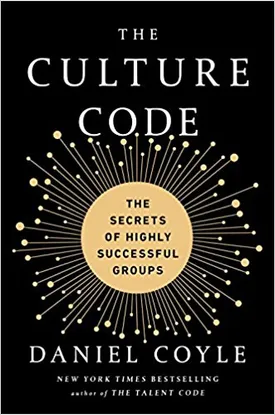The Culture Code: The Secrets of Highly Successful Groups by Daniel Coyle
The Culture Code: The Secrets of Highly Successful Groups by Daniel Coyle is a book which dives deep into the realm of group culture and delves into how it can shape the success of an organization. Through a series of interviews and anecdotes from some of the most successful groups in the world – including Pixar, the Navy Seals and the San Antonio Spurs – Coyle uncovers the secrets to creating an environment that encourages collaboration and willingness to innovate.
The book is organized around three core principles: safety, vulnerability, and purpose. Coyle suggests that when these elements are present, a culture is created which enables the members of a group to be better, more creative, and more productive than they could be on their own.
The first principle, safety, can be seen in the way that high-performing teams interact with each other. Coyle explains that in successful teams, members feel like they are part of a family and are encouraged to take risks without fear of failure. They also feel like they can share their ideas and thoughts without judgement or retribution. This leads to an atmosphere of openness, in which creativity and collaboration are actively encouraged.
The next principle, vulnerability, builds on safety by creating a deeper trust between team members. According to Coyle, high-performing teams do not fear being vulnerable. They are willing to make themselves vulnerable to one another and to show their genuine selves. This openness creates an environment in which members can bring their best selves to the table and feel comfortable voicing strong opinions.
Lastly, the principle of purpose serves as the unifying force for high-performing teams. The purpose of a group should be something that everyone in the group is passionate about and unites them together. Coyle explains that feeling connected to a larger purpose increases members' motivation and allows them to go further and do better than they could without it.
In addition to these core principles, Coyle also provides practical advice on how to build a culture within a team. He suggests things such as actively building team dynamics, pushing the boundaries of creativity, and fostering better communication between members.
Overall, The Culture Code: The Secrets of Highly Successful Groups by Daniel Coyle is an insightful read for those interested in how to build a successful, collaborative culture. Through the interviews and anecdotes, Coyle is able to paint a vivid picture of how a successful group can operate and what steps it takes to get there. He also provides practical advice for those looking for ways to foster an environment where creative thinking, innovative solutions, and real collaboration can thrive.

